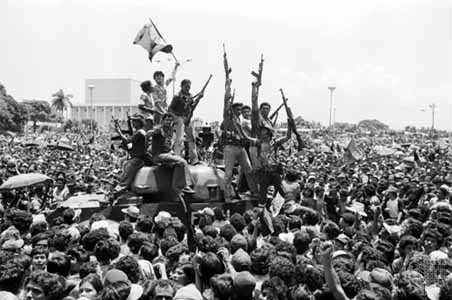Meanwhile in 1961 the Frente Sandinsta de Liberacion or Sandinista National Liberation Front (FSLN) was formed. They began a long guerilla war. In 1972 Managua was struck by a severe earthquake, that killed thousands. Somoza and his cronies took much of the international aid and opposition to his regime grew. By 1978 rebellion was spreading across Nicaragua. Finally in 1979 the Sandanistas launched an offensive. On 17 July 1979 Somoza fled abroad and on 19 July the Sandanistas captured Managua. The long campaign against Somoza had cost 50,000 lives.
Meanwhile relations with the USA deteriorated. The US ended aid in 1981 and introduced a trade embargo in 1985. (It was lifted in 1990). Daniel Ortega (Sandanista) was elected president in 2006. He was re-elected in 2011.
Today Nicaragua is still a very poor country. Nicaragua is overwhelmingly an agricultural nation but tourism is a growing industry. Many people from Nicaragua work abroad and there is much underemployment at home. Today the population of Nicaragua is 5.7 million.[1]
[1] Source: http://www.localhistories.org/nicaragua.html
